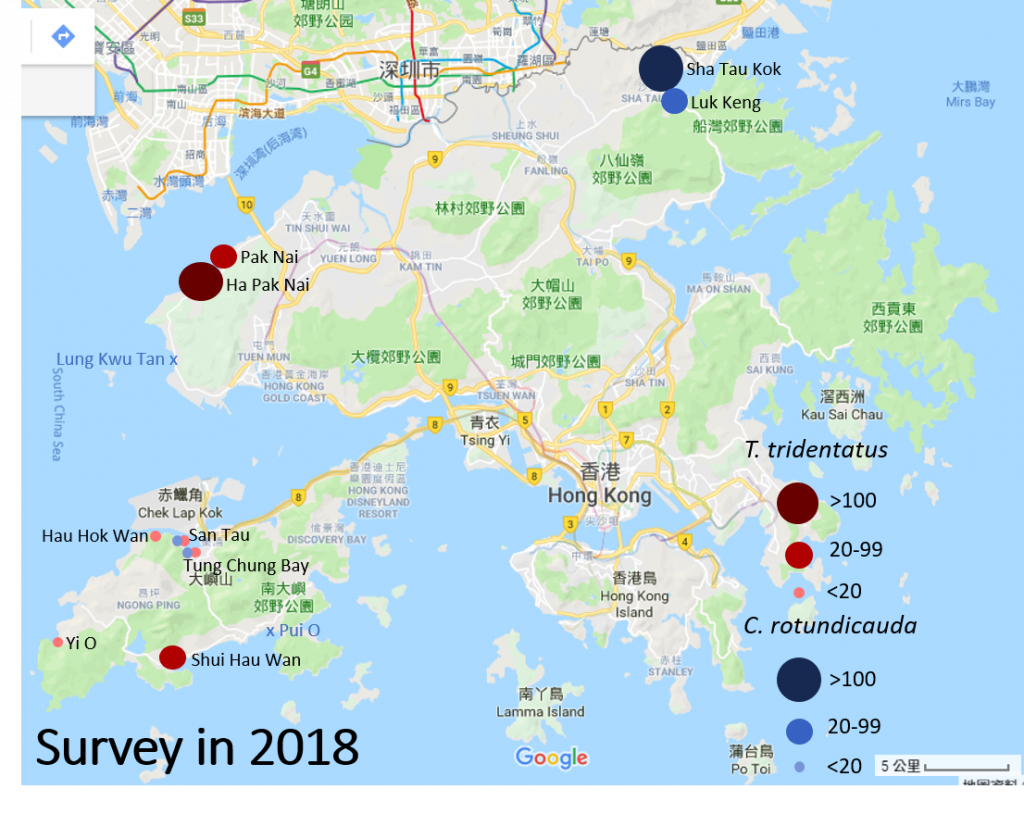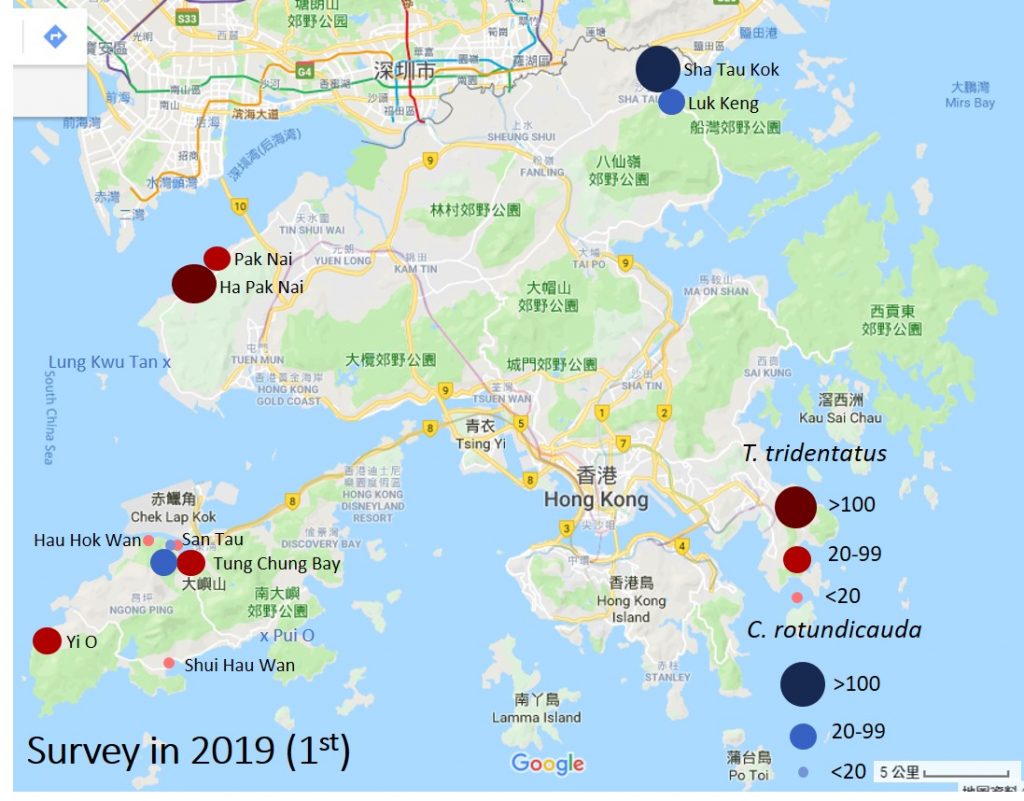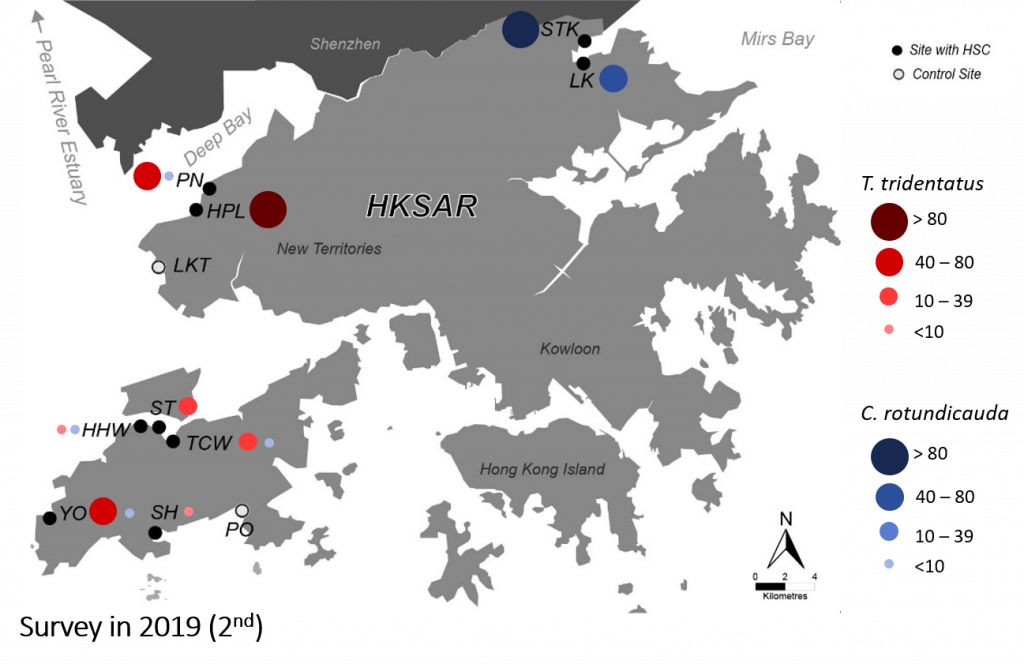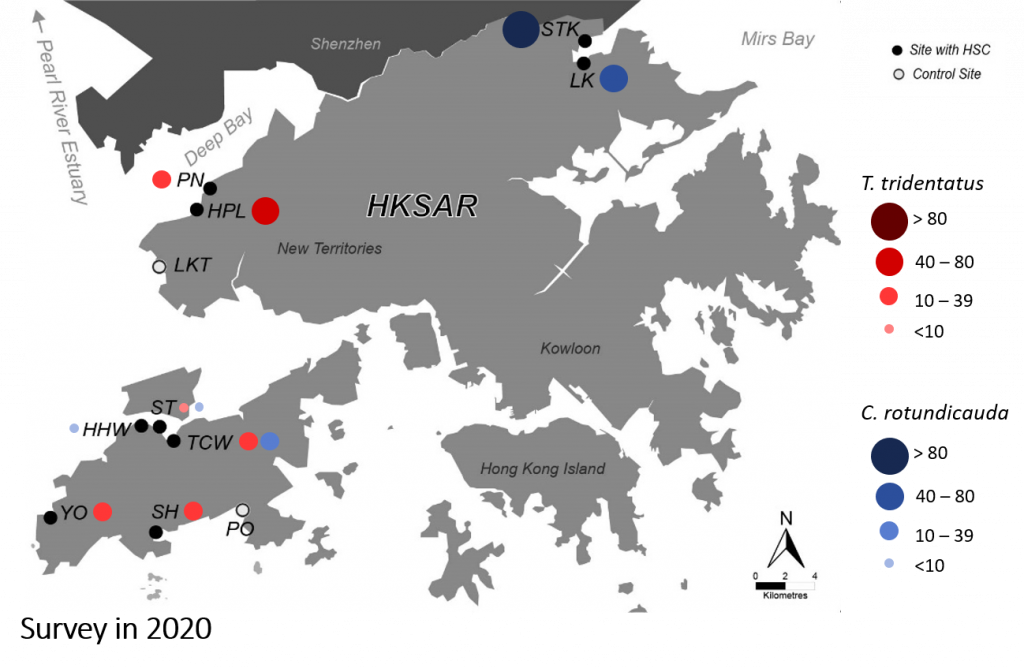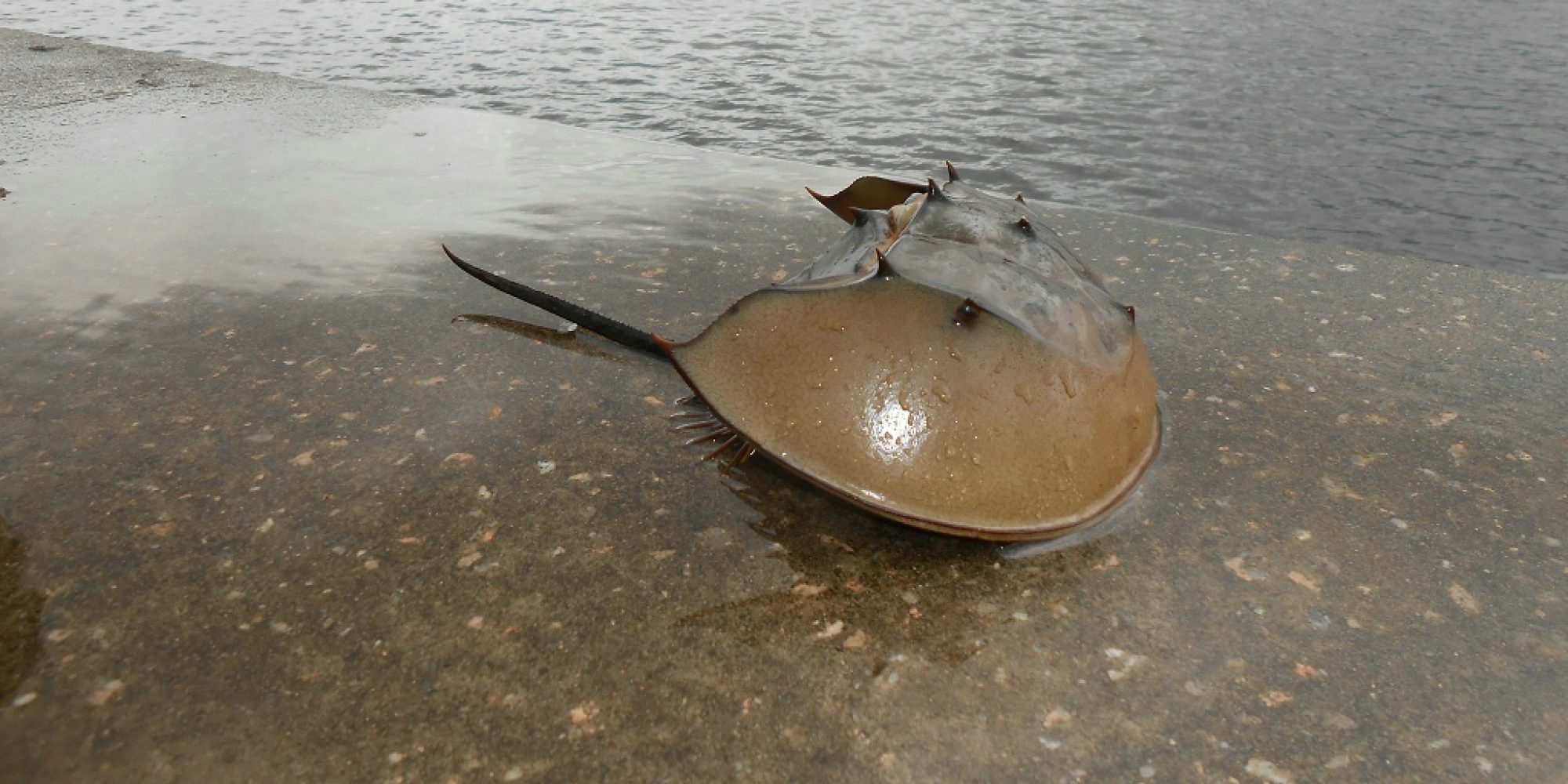Research Background
The number of horseshoe crabs have been declining worldwide including Hong Kong (e.g. Beekey and Mattei, 2015; Faurby et al, 2010, Morton and Lee, 2010, Widener and Barlow, 1999). In Hong Kong, the wild population of horseshoe crab was estimated to have dropped by over 90% between 2000 and 2009, while the number of local juvenile horseshoe crabs was estimated to be less than 10,000, with 4,500 juvenile TT and 3,000 juvenile CR.
Biomonitoring of horseshoe crab species is crucial for understanding their interactions with the environment both spatially and temporally, which in turn can provide important information to the formulation of effective conservation efforts. In Hong Kong, traditional surveying methods are usually employed. While these studies are important, traditional surveying methods relies on physical capturing or visualization of individuals which could encounter potential limitations including invasiveness, standardisation and dependence of weather conditions (Taberlet et al 2012; Thomsen and Willerslev 2015) that hinder the accurate estimation of species distribution.
As a new complementary efficient technique, the detection of environmental DNA (eDNA) offers the opportunity to overcome some of the limitations encountered in conventional method. eDNA in general refers to DNA collected from environmental samples without any obvious signs of biological source material. This is made possible given DNA is usually released and accumulated in the organisms’ surroundings when they interact with the environment, such as body fluid/saliva, exoskeleton/skin, faeces, gametes, or other secretions. This non-invasive and standardized method allows biomonitoring of organism throughout the year without the necessity of capturing/visualization of organisms, providing useful information complement to traditional approach and enhance the cost-effectiveness of field survery. However, there is currently no published eDNA protocol established for horseshoe crabs.
The horseshoe crab has a significant conservation value in Hong Kong. However, their current geographical distributions in Hong Kong as well as their genetic diversity are unknown. In addition, some of the latest techniques in studying species distribution and genetics, namely population genomics and eDNA monitoring, are currently lacking for the horseshoe crabs.
Results
This project has :
1) revealed the population distribution of juvenile horseshoe crabs using traditional
survey method – a total of 11 sites including 2 control sites, were visited twice during
2018 and 2019. Field data were recorded, and the locations and abundance of
horseshoe crabs CR and TT were revealed in Hong Kong, including places that
were previously thought of not containing horseshoe crabs anymore;
2) tested and applied environmental DNA (eDNA) technique in studying horseshoe
crabs in the field – specifically, detection of eDNA signals of CR and TT could be
successfully adopted to test water and sediment samples collected from different places in Hong Kong;
3) revealed that the horseshoe crabs in Hong Kong are genetically diversified by
carrying out the first population genomic study of local horseshoe crabs;
4) constructed a website to serve as platform for summarising results in this study as
well as for future citizen science campaign. To promote public awareness of conservation of local horseshoe crab, citizens are encouraged to report the observance of horseshoe crabs in Hong Kong with the novel function in SIGHTING REPORT.
To conclude, this project has substantially improved our understanding on the
situations of horseshoe crabs CR and TT in Hong Kong, including their geographical
distributions, abundance, and genetics. In addition, the eDNA technique for detection
of horseshoe crabs as well as a sustainable website for information dissemination and
further interactions with the public have also been established.
The summaries of the field survey results conducted in 2018, 2019 first half, 2019 second half and 2020 are shown in the maps below respectively.
